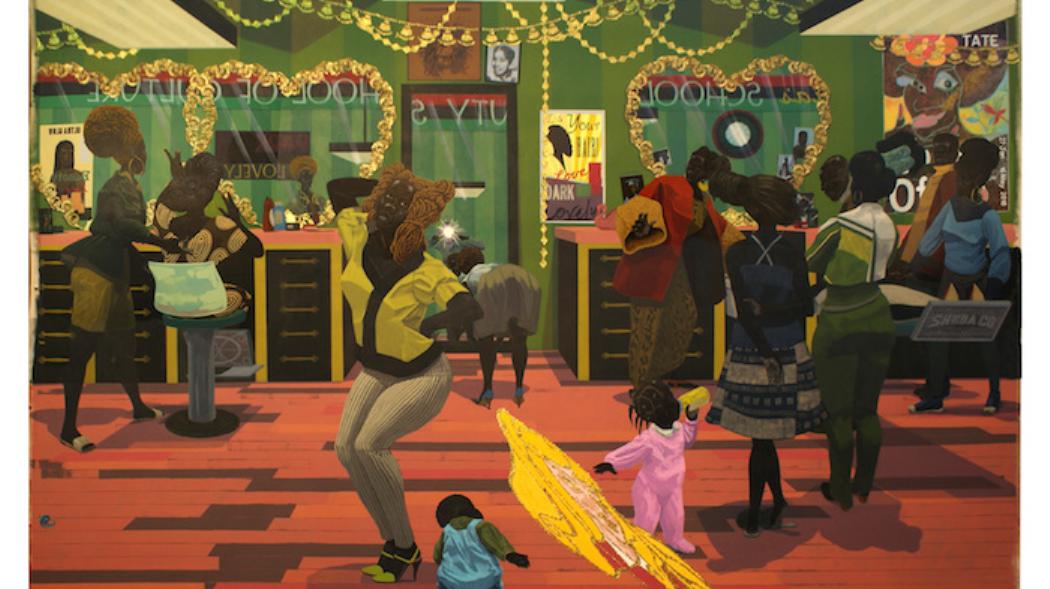Kerry James Marshall’s current retrospective at MoCA is less a ‘Pick-of-the-Week’ than a Must of the Year. Regardless of the particulars of each individual’s experience, it is a show that compels serious reevaluation of the historical canon of Western painting (and possibly representational and narrative painting generally), that artistic apogee we call the ‘masterpiece,’ and the tenuous perspectives offered by art and cultural history. This is as much about Culture as art (I imagine Marshall’s voice: ‘Listen up, Clement Greenberg…’) It’s about how culture responds to a power structure and how its art absorbs and channels a dominant political narrative; how cultural authority channels and reflects – in varying degrees of uncertainty and subtlety – that power structure. More importantly, it’s about how those terms are subverted or entirely reversed. Of course it is a political art. It is also an art of idealism. It embraces the same canon it challenges, and says ‘Look at me.’ For those of us privileged to have had broad exposure to Western painting to the extent that we recall images of Africans or individuals of African descent in works of European art, consider who those individuals were and where they were in those representations. Consider the black maid who figures prominently and distinctively in Manet’s Olympia. The courtesan ‘Olympia’ may be nothing more than her pose or her job description, but that is the girl the world is coming to see, the girl the political power structure supports, and the device Manet has chosen to challenge one segment of that power structure. And in 1863, that beautiful, well-dressed maid was probably one of the lucky ones. And then the maid(s), (fill in the blanks: stable boys, coachmen, valets, blackamoors, natives on an African savannah) recede again into the backgrounds or disappear altogether. With a frontality that matches Manet’s, Marshall addresses appearance on every level – from the casual, almost fleeting observation, to the consciously and directly representational, to the formally evidentiary and broadly symbolic; and finally (and sometimes equally directly) to the underlying narrative that supports or challenges the perception of those representations. This extends to the importance of the frame itself (and scale: these are large paintings) – addressing the ‘narrative’: what it tells or reveals, and leaves out or represses (and sometimes, as Helen Molesworth, the show’s co-curator and editor of its catalogue, might put it, both simultaneously). In contrast to that European benchmark, Marshall’s treatment of the figure ranges between a hard schematic realism and something more ‘magical.’ His approach is allegorical, rather than strictly historical (or ‘memorial’), reaching back to where that ‘disappearance’ actually begins – the medieval and early Renaissance. Alongside those hard-scraped figures, bluebirds arc and scrolls or music staves unfurl ‘keynote’ messages or blunt broadsides. Also frankly dissonant notes both pictorial and stylistic: a ‘paradise’ not lost, but corrupted and certainly disrupted – these are allegories replete with contradiction. As Molesworth put it in one of her gallery talks (which I encourage prospective viewers to check out), “You can’t resolve this; you can only be with this.” Whatever the duration of your visit, Marshall’s paintings will be with you for a long time.
The Museum of Contemporary Art, Los Angeles (MoCA)
250 So. Grand Avenue
Los Angeles, CA 90012
Show runs thru July 3, 2017



















0 Comments